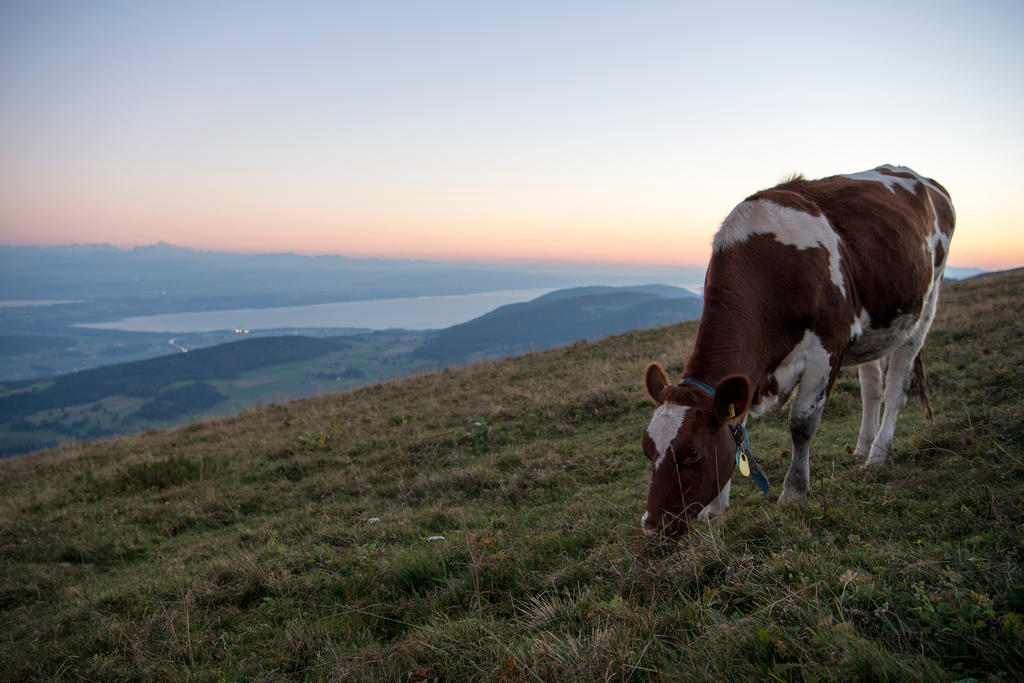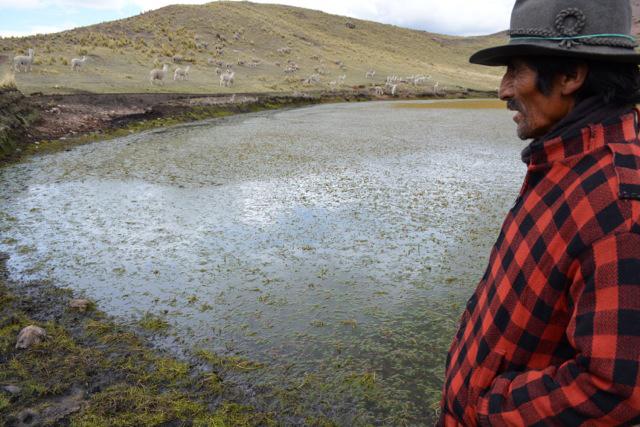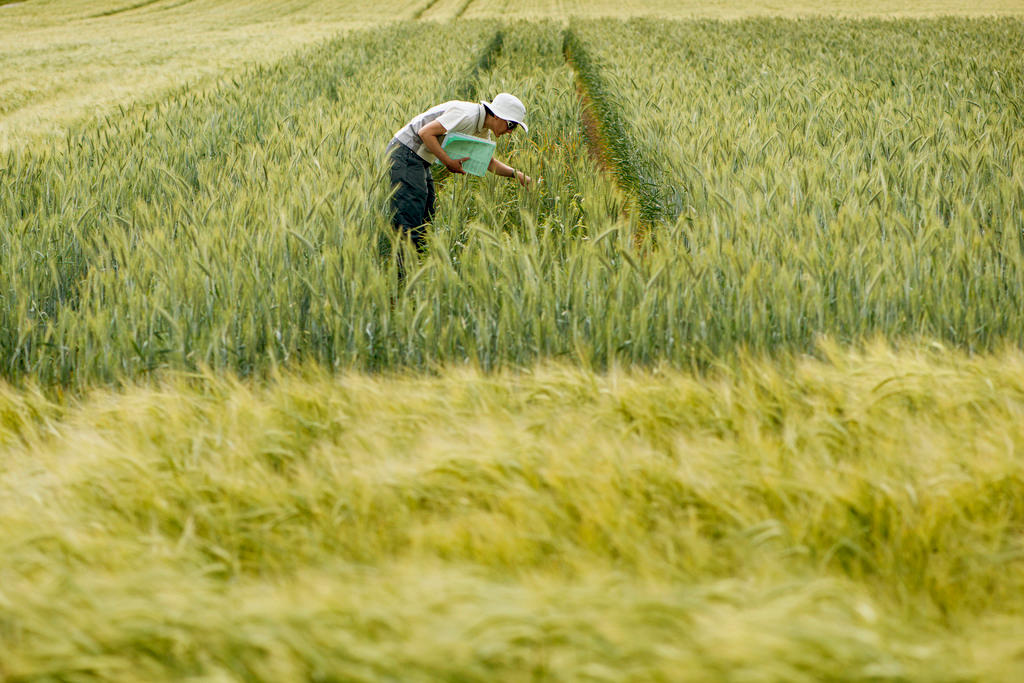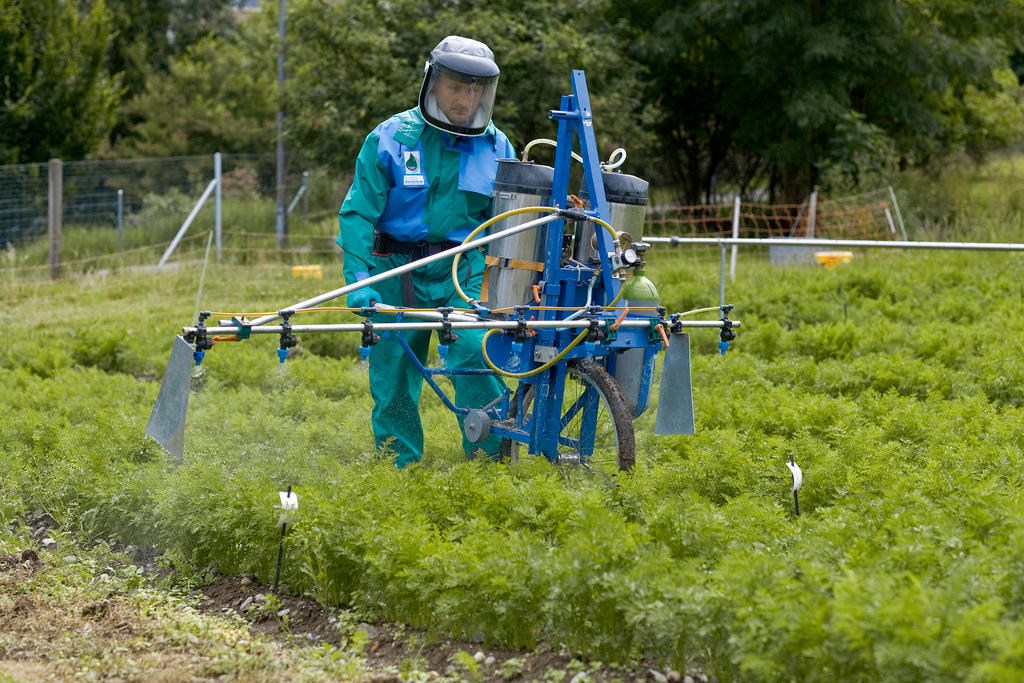Swiss dairy farmers must adapt to climate change

As temperatures climb and growing seasons change, milk producers across Switzerland must cooperate with one another to improve their grassland management practices if they want to break even, says an official agriculture report.
Dairy cow breeders in Switzerland are already struggling to cover production costs due to market liberalisation and lower prices. But according to a report from the national agricultural research centre, AgroscopeExternal link, farmers must also manage the effects of climate change to ensure that they can continue to produce enough fodder to feed their herds. The report is based on research conducted in the Jura mountains of northwestern Switzerland between 2014 and 2016.
In Switzerland, temperatures have risen by about 1.7 degrees Celsius over the past 150 years. Over time, the increased risk of drought is particularly threatening for dairy cow breeders, Agroscope noted in its press release last week. The Jura region is especially sensitive to lack of water due to its permeable soil, and in 2015 the area experienced especially severe grassland yield losses of 20-40% due to drought.
Farmers can and must develop new land management practices to counter these challenges, the report argues. Cattle breeders can start by taking advantage of the longer grass growing season caused by climate change, and grazing their cattle more in the spring and fall – a practice which could create significant savings on imported cattle fodder.
But these practices must be planned and managed carefully: many grasslands in the Jura hills are already over-grazed, and the Agroscope report suggests several strategies for ensuring a healthy balance between cost savings, efficient fodder production, and sustainable land management.
These include modifying the breeds and numbers of cattle grazed in certain areas, collaborating with crop farmers to create a balanced equilibrium between fodder supply and demand, and developing temporary grasslands and pastures with more drought-resistant grass species. The report also recommends cooperation and networking efforts between lowland and mountain farmers, as operations in each area are affected differently by periods of drought and rainfall.

In compliance with the JTI standards
More: SWI swissinfo.ch certified by the Journalism Trust Initiative



You can find an overview of ongoing debates with our journalists here. Please join us!
If you want to start a conversation about a topic raised in this article or want to report factual errors, email us at english@swissinfo.ch.